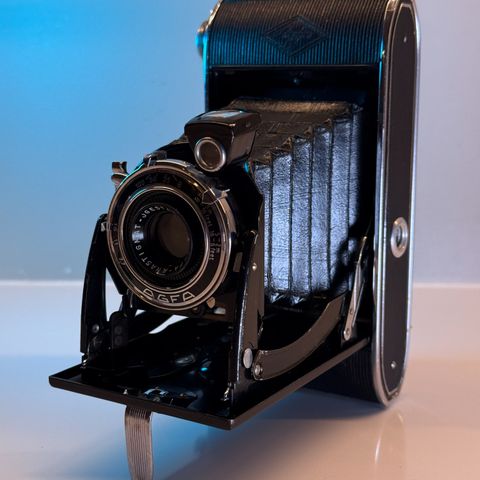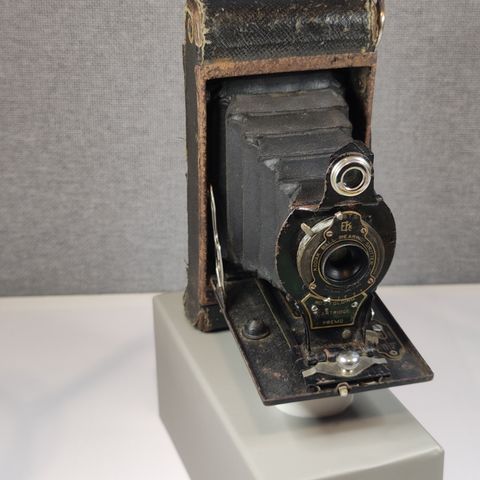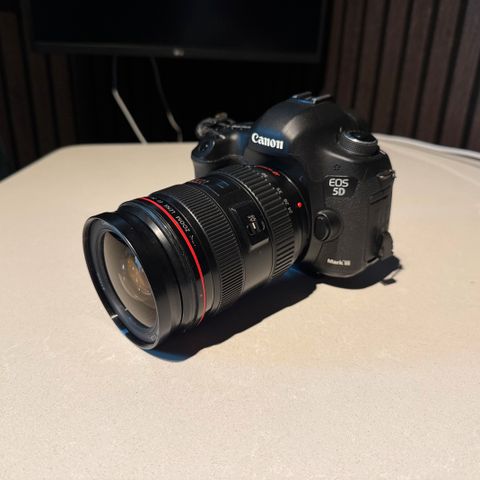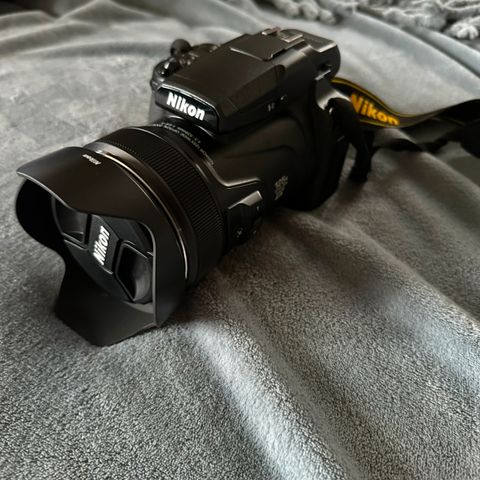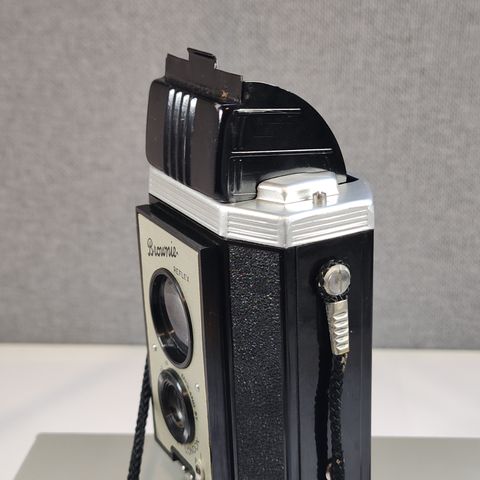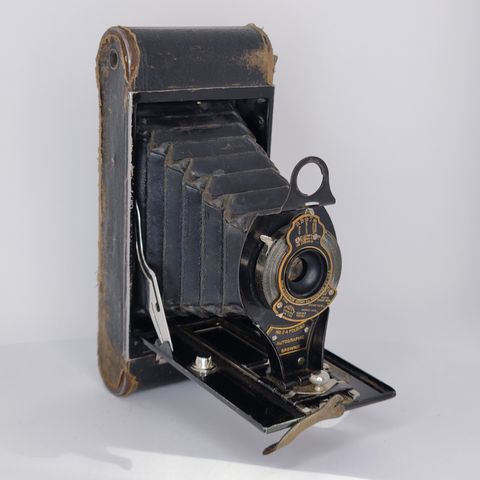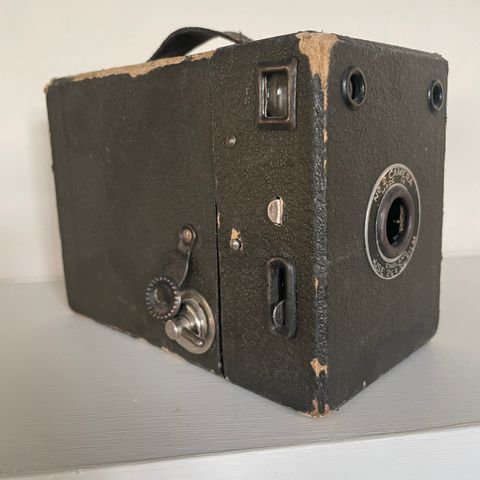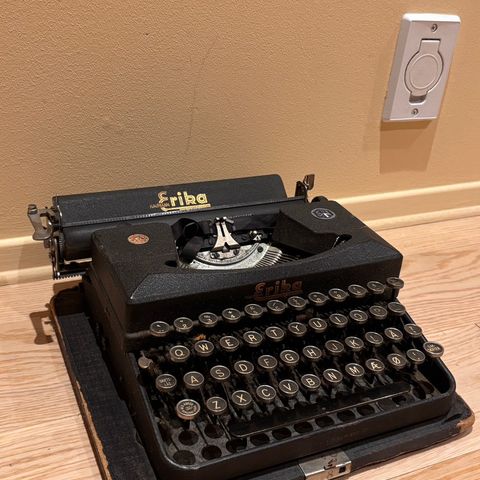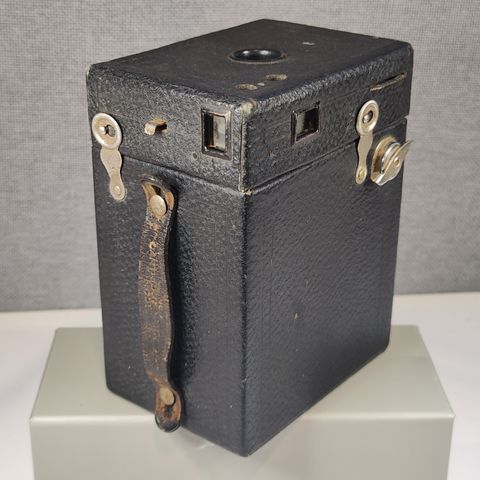Bildegalleri
Art Deco / Vintage: Agfa Billy Clack
Beskrivelse av varen
Agfa Billy Clack er en kameraserie fra Agfa, produsert mellom 1934 og 1940 i Tyskland.
Agfa Billy Clack ble solgt i noen land som Speedex. Kameraet regnes som et Art Deco kamera fra den midtre perioden. Det har en Bilinar Achromat linse med lysstyrke på f 11 til 22. Lukkeren er av rotasjonstypen , og lukker på 1/30 sekund, i tillegg på selvbestemt tid.
Agfa Billy Clack no. 74 er et mellomformat kamera som bruker 120 film med negativer på 6 x 9 cm. Det andre kameraet i serien no.51. Har negativer på 4,5 x 6 cm og bruker 120 film.
Dette er et samlerkamera!
INFORMASJON fra Wikipedia - NB! Dette er no 74
Agfa Billy-Clack
The Billy-Clack is either of two strut-folding cameras made by Agfa from about 1934 to 1940.[1] There are two models, for different formats. On both, the front panel is decorated with glossy black enamel between raised chrome strips. The name 'Clack' was used for simple cameras made by Rietzschel before they and Agfa merged (in the creation of IG Farben).[2] In some countries they were sold with the name Speedex.
Billy-Clack No. 51
The Billy-Clack No. 51 (or Speedex No. 51) takes sixteen 4.5×6 cm pictures on 120 film. It has an f/8.8 Igenar lens ('Jgenar'; the name probably refers to Agfa's being part of IG Farben), a periscopic doublet lens[3] with three aperture settings (f/8.8, f/11 and f/16, which are achieved by switching between fixed-size apertures, not with an iris). It has a simple 'I' and 'B' shutter, brilliant finders for landscape and portrait orientation, and a built-in yellow filter. Like many folders of its age, it has a winding key, not a knob, and it has two red windows, with a swivelling cover.[2]
Early examples have conventional leatherette covering;[4] McKeown states that cameras made from 1938 onward are covered with Robusit herringbone-textured covering (the examples pictured in McKeown and on Mario Groleau's site have this covering).[1][2]
Billy-Clack No. 74
The Billy-Clack No. 74 takes eight 6×9 cm pictures on 120 film. It has an f/11 Bilinar achromat lens, with aperture settings for f/16 and f/22, again by switching between fixed-size apertures. Like the No. 51, it has an 'I' and 'B' shutter and brilliant finders for both orientations. It also has a folding frame finder on the camera body. Instead of the yellow filter, McKeown states that this camera has a portrait lens.[1] Again, early examples are covered with leatherette, as pictured here, with vertical stripes impressed above the Agfa rhombus logo. Later cameras have herringbone covering.[5]
Brukerprofil

Du må være logget inn for å se brukerprofiler og sende meldinger.
Logg innAnnonsens metadata
Sist endret: 13.2.2025 kl. 21:24 ・ FINN-kode: 393244432














